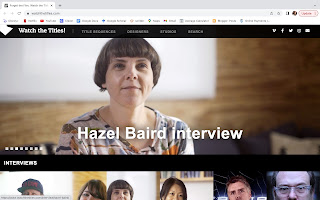Critical Reflection
Critical Reflection
• How do your products represent social groups or issues?
Many thriller films have been criticized for perpetuating gender equality in recent years, often portraying women as helpless victims in need of being rescued. By normalizing these plotlines, these movies fail to represent women in society and contribute to reinforcing gendered power differences. However, our short film challenges these false conventions by placing a female protagonist as the dominant one. Our narrative follows two assassins, one male and one female, who are tasked with eliminating each other. By giving both the characters equal placing in the film, we create a leveled playing field between the genders. Throughout the film, the female is seen as capable, understanding the deceptive tactics that the male assassin uses against her. She is also seen asserting her dominance on multiple occasions, ultimately belittling the male assassin throughout the film.
In contrast to typical thriller narratives, our film presents a woman as an aggressor who asserts her power, rather than as a victim. This weakening of the traditional gender roles challenges the convention that men are inherently dominant. Our postcard and website further reinforce this theme. The front of the postcard prominently features a female figure holding a knife, which symbolizes empowerment and agency. The color scheme and size of the female silhouette in the picture help emphasize the message of empowerment. On our website, we showcase positive reviews, such as ones where people are praising the film for challenging the gender inequality.
By overturning the conventional gender dynamics and highlighting the strength and agency of the female, our film helps contribute to a more inclusive and equitable portrayal of women in film. Through powerful visuals and messaging, our film aims to reshape audiences’ perceptions on diversity and representation in gender and storytelling.
• How do the elements of your production work together to create a sense of ‘branding’?
Maintaining visual consistency across all our products was crucial to creating a cohesive brand identity. With this deliberate choice, we aimed to cultivate familiarity and resonance with our audience. As an example, the postcard accompanying our short film features a striking red-to-white gradient background featuring a silhouette of a woman brandishing a knife. We strategically integrated this imagery throughout our website, prominently displaying it on the homepage as well as repeating it throughout the "Cast and Crew" section. The red-to-white color scheme was maintained consistently across all platforms, reinforcing our brand's visual identity, and ensuring immediate recognition by our audience.
Additionally, the title card of our film, named "Maneater," uses a bold red font, which we maintain across all promotional materials. This red font was mirrored in the graffiti-like typography of the postcard, further reinforcing our brand's cohesive aesthetic. Similarly, this distinct red hue was incorporated into the website's design, where every page has a flash of red. This repetition of colors and fonts serves as a crucial branding strategy, promoting recognition and setting us apart in a competitive market landscape.
Beyond just visual consistency, our choice of a consistent red color scheme was purposeful, aiming to induce specific emotions in our audience. Given the thriller genre's themes of danger, suspense, and passion, red was strategically employed to draw out these responses. By consistently utilizing this color throughout our products, we sought to establish a deeper emotional connection with consumers to create a sense of association with our brand.
• How do your products engage with the audience?
Thriller short films possess a distinct ability to create powerful emotional responses from audiences, which we aimed to use in our product. The use of our postcard was a key tool for attracting attention and stirring interest in the film. We were trying to capture the essence of our story, convey its mood, tone, and theme depth by deliberate selection of images. One example is the choice to include a woman's figure holding a knife, an image theme aimed at enticing viewers with hints of some suspenseful journey they are about to encounter. We used the power of atmospheric landscapes as well, perfectly captured in our opening shots, to induce an atmosphere of foreboding anticipation for audiences. The intentional absence of music in some scenes, especially the first shot which shows the house where the story unfolds, is intended to awaken viewers’ interest, and set the stage for future tension.
Moreover, we employed narrative techniques to actively engage our audience. We communicated information to viewers that characters within the story remained oblivious to. For instance, viewers are aware that both protagonists are tasked with eliminating each other, which is unknown to the characters themselves. This narrative device serves to intrigue audiences with a sense of urgency and excitement, promoting a deeper connection to the unfolding drama.
Beyond the film itself, our website serves as a platform for audience interaction. Emphasizing user accessibility, we crafted an easily navigable page and link, ensuring easy access to additional information and behind-the-scenes insights. To maintain ongoing engagement and updates, we integrated social media links, such as Instagram, directly into our website interface, allowing viewers to stay involved in the film's progress and development.


.jpeg)
Comments
Post a Comment